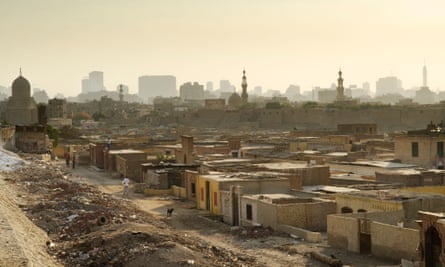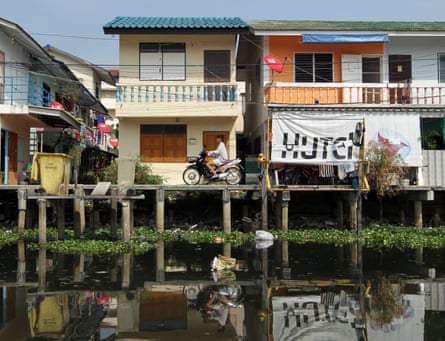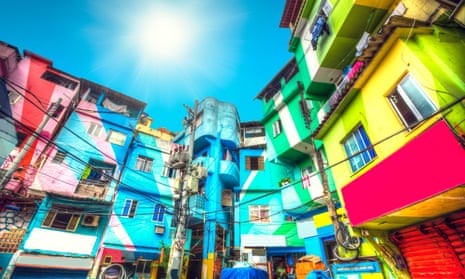Myth 1: You can’t predict how slum populations are going to grow
“One thing that is poorly understood is population growth in Africa,” says William Cobbett, director of Cities Alliance . “It is thought that populations are growing mainly because of urban migration. That’s not correct. Across the continent, the bulk of population growth comes from natural population growth. Undesa figures from 1950-2050 show that in the case of Uganda – the outlier – its population in one century will multiply 20 times. That has never happened in human history.” Tanzania will grow 18 times and Nigeria 10.5.
“Most local authorities don’t have the capacity to deal with this, so there is no forward planning to make provisions for this population growth, which we know is going to happen.”
His organisation is trying to combat the mindset that you can’t plan for increased slum population, by supporting the creation of municipal development forums in a number of Ugandan cities. These are structured discussions where the local authority, local private sector companies and slum dwellers meet and deliberate about the future of the city.
Having the capacity to plan for future slum populations isn’t just a problem limited to Africa though.

Population explosions in many developing countries mean by 2030, 3 billion people – roughly 40% of the world’s population – will need proper housing, according to UN-Habitat.
The fact that slums exist in the first place is just evidence of places where urban planners and governments have already failed to keep up with the demand for homes.
Myth 2: Slum residents would always rather live in formal housing
The bulldozing of slums and the eviction of their residents used to be seen as a good thing. Why would people want to live in squalid, overcrowded spaces with no access to municipal services like water or waste collection? These places were a blight on cities so, if offered an alternative, people would jump at the chance to leave them, right?
Actually, no – especially as traditionally poor planning has sometimes not only left former slum residents in worse housing situations, but crucially also cut off from their old support network.

Photograph: Halden Krog/EPA
The social upheaval that can come with moving people out of improvised housing and into apartment blocks is well documented. Kenyan slum Kibera is a case in point, with reports of locals regretting making the move from their shacks to hi-rise blocks. Originally excited about the opportunity of moving to a complex nicknamed The Promised Land, some ended up moving out of the flats following water shortages while others saw a business opportunity renting out their new homes to middle-class Kenyans at several times the subsidised rate. Those who stayed still shop in the slum, where food is cheaper.
The importance of proper planning is a logistical nightmare across Latin America too. Delicate social structures can be torn down faster than the shacks the communities lived in. Claudio Acioly Jr, head of capacity development at UN-Habitat, says many delicate human factors are often overlooked: “For example, in Brazil, the number of women-headed households is enormous and there is a rich network of informal arrangements. So when you move them, you move the location of the school and remove their arrangements for someone to look after the house and kids while they’re out.”
Poor planning puts extra pressures on residents. “In Mexico, where the slums were 7km away from the city centre, the housing scheme was 37km away.” Nearly 5m housing units were unoccupied 10 years on, he says. “[Residents moved out] because they found they had to take two methods of transport to get to work and they’re in a housing estate without any shops, in the middle of nowhere.”
Myth 3: Slums should be treated differently to the rest of a city
Slums are part of the fabric of many cities and many have mighty populations. The informal areas in Cairo are a good example of this. They have among the biggest populations in the region and are given names such as ‘The City of The Dead’. Out of a population of 90 million people, the Housing and Land Rights Network says at least 30% of Greater Cairo’s residents live in slums.

Photograph: Alamy
Ahmed Mansour of the Housing and Land Rights Network argues that a holistic approach is needed: “For decades, Egypt has been facing a housing crisis that governments have mismanaged and the private sector has exploited.
“The problems within slums or informal areas cannot be treated in isolation from the rest of the city since they show structural inequalities that should be tackled integrally.”
This is where slum upgrading could help, as the philosophy behind the urban renewal strategy is to gradually improve informal settlements, formalising and incorporating them into cities so residents have the same rights as everyone else there. Projects vary from place to place but the idea is to provide more durable housing, increase residents’ rights and connect them to infrastructure and services that other citizens have such as access to clean water.
Myth 4: It’s possible to discourage people from moving into slums
Alongside population growth, urbanisation is also driving slum growth – people moving to cities to find work. Here, India is a good example – the slum situation there is so vast that Prime Minister Narendra Modi has pledged to build 20 million homes. As implausible as this seems – where? how? – it doesn’t change the fact that 41% of the population of Mumbai lives in some kind of slum.
Tony Soares, director of volunteer organisation SlumAid, works primarily with the Baiganwadi slum, which is situated near Mumbai’s largest waste dumping ground.
“You’ve got to find a different solution that takes in the needs of the people who are currently living there. But people keep coming from the villages looking for work and people will find a way to rest their head any way they can,” Soares says.

Photograph: Rungroj Yongrit/EPA
How can you stop people moving to city slums? You can’t, says Soares: “People move from villages because they have a lot of children and there isn’t enough work. The cities are where they earn money.”
He speculates that Bollywood movies, which paint the major Indian cities as glamorous, make them all the more enticing.
“If you really wanted to do something, start by asking local residents what they need. Many shack owners have been there for a long time, sometimes generations. There is no easy solution.”
Join our community of development professionals and humanitarians. Follow @GuardianGDP on Twitter.

Comments (…)
Sign in or create your Guardian account to join the discussion